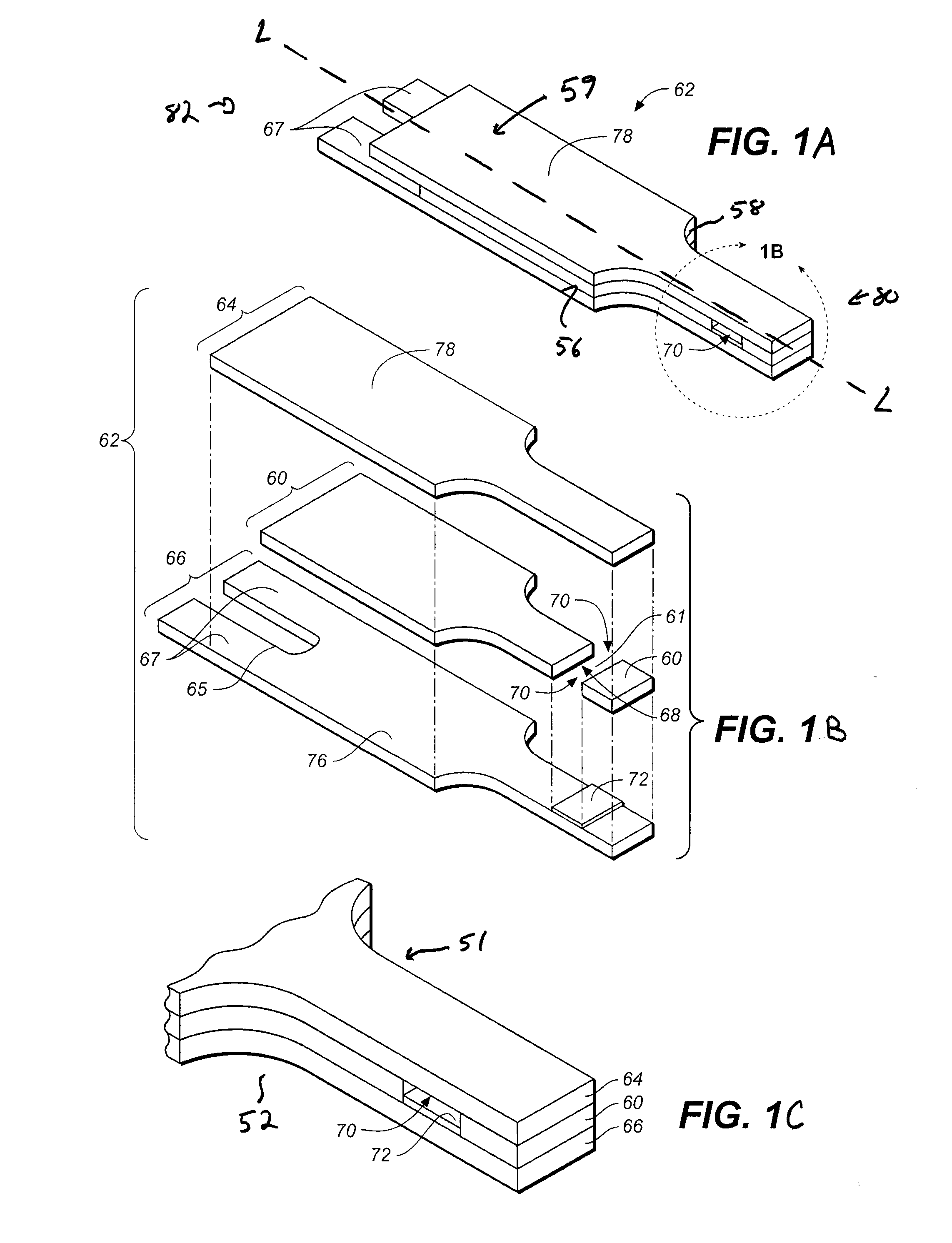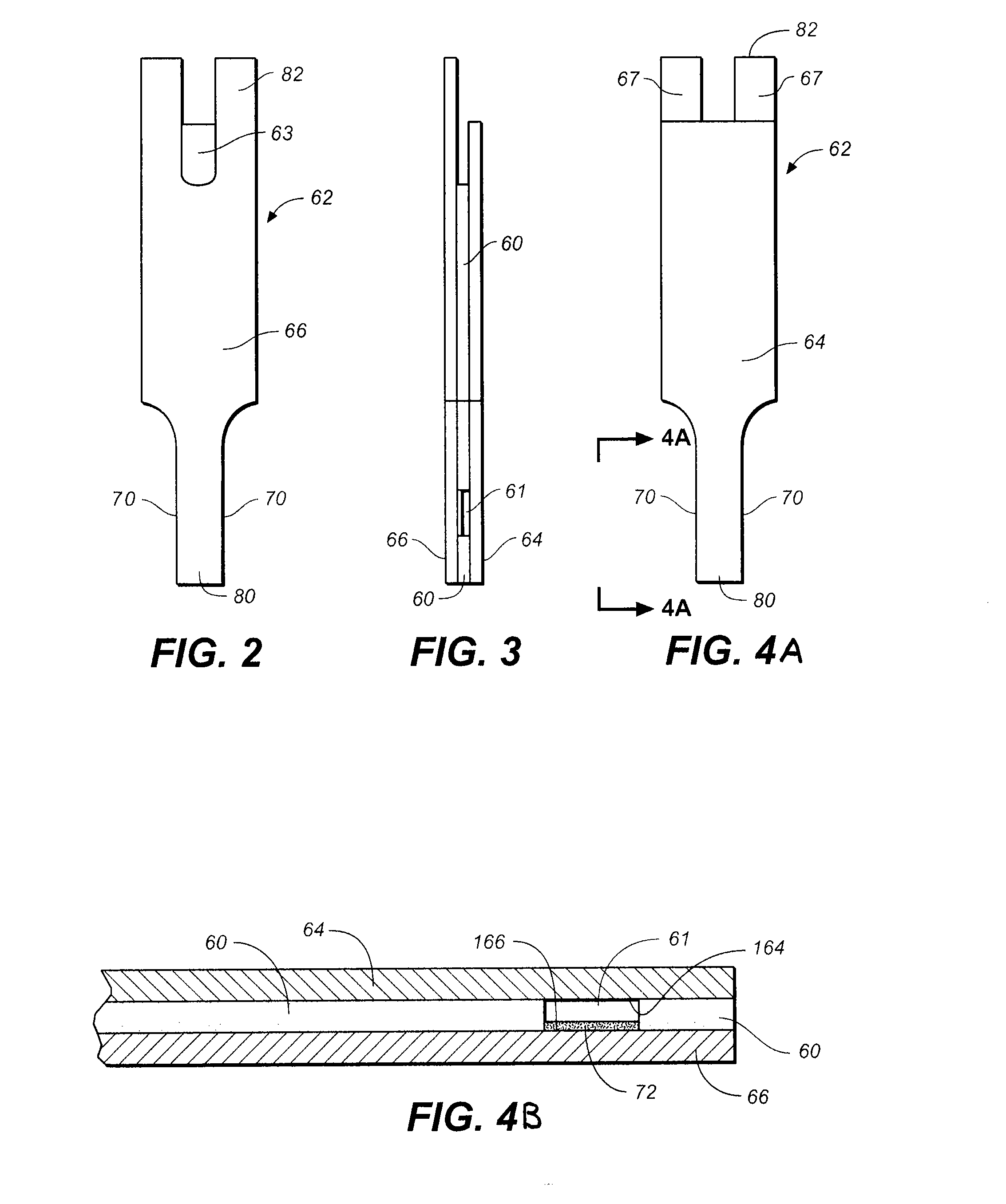Methods And Apparatus For Analyzing A Sample In The Presence Of Interferents
- Summary
- Abstract
- Description
- Claims
- Application Information
AI Technical Summary
Benefits of technology
Problems solved by technology
Method used
Image
Examples
example 1
[0110] A buffer was prepared that contained 67 mM citraconate at pH 6.8, 0.1% anti-foam (2 parts Pluronic P103 and 1 part Pluronic F87), 60 mM sucrose, and 1.7 mM CaCl2. Next, GDH which used a PQQ cofactor, was added to the buffer so that it was 15 mg / mL. PQQ was then added to the buffer so that it could activate the GDH. After addition of PQQ, the formulation was allowed to incubate about on hour. Next, potassium ferricyanide was added to the mixture such that it was 600 mM. The formulation was striped onto first electrically conductive layer 66 as shown in FIG. 1 by means of a slot coating process which is described in U.S. Pat. Nos. 6,749,887; 6,689,411; and 6,676,995 which are hereby incorporated by reference herein. Upon coating the formulation and drying it such that it forms reagent layer 72, spacer 60, and second electrode 164 are assembled thereon to form test strip 62.
example 2
[0111] Several test strips 62 were tested with blood containing a glucose concentration ranging from about 83 to 88 mg / dL and had interferents spiked into the blood sample. Test strips 62 were tested on test meter 100 using a glucose test time interval TG of 5 seconds. Test meter 100 applied a potential waveform as shown in FIG. 6. A test current was collected for each test strip and converted to a glucose concentration using a first glucose algorithm, as shown in Eq. 1, and a second glucose algorithm, as shown in Eq. 6. An average bias was calculated for each test strip against the reference method in units of mg / dL. FIG. 11 shows that the overall bias was reduced in the presence of interferents such as ascorbate and urate when using the second glucose algorithm as opposed to using the first glucose algorithm.
example 3
[0112] The experiment of Example 3 was repeated in a similar manner with a different set of test strips 62. For this experiment, the test current was collected for each test strip and converted to a glucose concentration using a first glucose algorithm, as shown in Eq. 1, and a third glucose algorithm, as shown in Eq. 7. FIG. 12 shows that the overall bias was reduced in the presence of interferents when using the third glucose algorithm as opposed to using the first glucose algorithm. The use of the term Co instead of simple summation of current may enable a more accurate measurement to be made in the presence of interferents.
PUM
 Login to View More
Login to View More Abstract
Description
Claims
Application Information
 Login to View More
Login to View More - R&D
- Intellectual Property
- Life Sciences
- Materials
- Tech Scout
- Unparalleled Data Quality
- Higher Quality Content
- 60% Fewer Hallucinations
Browse by: Latest US Patents, China's latest patents, Technical Efficacy Thesaurus, Application Domain, Technology Topic, Popular Technical Reports.
© 2025 PatSnap. All rights reserved.Legal|Privacy policy|Modern Slavery Act Transparency Statement|Sitemap|About US| Contact US: help@patsnap.com



